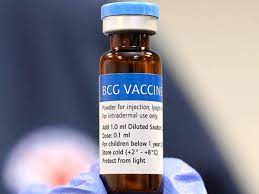CURRENT AFFAIRS
Get the most updated and recent current affair content on Padhaikaro.com
Bacillus Calmette–Guérin (BCG) vaccine
- Vaid's ICS, Lucknow
- 01, Sep 2021

Why in News?
100 years has passed since the Bacillus Calmette–Guérin (BCG) vaccine was introduced to combat tuberculosis (TB) on 18 July, 1921.
What is BCG Vaccine?
- Bacillus Calmette–Guérin (BCG) vaccine is a vaccine primarily used against tuberculosis (TB).
- BCG was developed by modifying a strain of Mycobacterium bovis (that causes TB in cattle). It was first used in humans in 1921.
- Currently, BCG is the only licensed vaccine available for the prevention of TB.
- It is the world’s most widely used vaccine with about 120 million doses every year and has an excellent safety record.
- In India, BCG was first introduced in a limited scale in 1948 and became a part of the National TB Control Programme in 1962.
- In children, BCG provides strong protection against severe forms of TB. This protective effect is far more variable in adolescents and adults, ranging from 0–80%.
- BCG also protects against respiratory and bacterial infections of the newborns, and other mycobacterial diseases like leprosy and Buruli’s ulcer.
- It is also used as an immunotherapy agent in cancer of the urinary bladder and malignant melanoma.
Varying Efficacy of BCG:
- BCG works well in some geographic locations and not so well in others. Generally, the farther a country is from the equator, the higher is the efficacy.
- It has a high efficacy in the UK, Norway, Sweden and Denmark; and little efficacy in countries on or near the equator like India, Kenya and Malawi, where the burden of TB is higher. These regions also have a higher prevalence of environmental mycobacteria.It is believed that these may interfere with the protective effect against TB.
What is tuberculosis (TB)?
- TB is caused by a bacterium called Mycobacterium tuberculosis, belonging to the Mycobacteriaceae family.
- In humans, TB most commonly affects the lungs (pulmonary TB), but it can also affect other organs (extra-pulmonary TB).
- Unlike other historically dreaded diseases like smallpox, leprosy, plague and cholera that have been either eradicated or controlled to a large extent, TB continues to be a major public health problem in the world.
- According to the WHO’s Global TB Report, 10 million people developed TB in 2019 with 1.4 million deaths.
- India accounts for 27% of these cases.
Facts for Prelims:
Shaped recovery
V-shaped recovery is a type of economic recession and recovery that resembles a “V” shape in charting. Specifically, a V-shaped recovery represents the shape of a chart of economic measures economists create when examining recessions and recoveries.
The Bamako Convention
- The Bamako Convention is a treaty of African nations prohibiting the import of any hazardous waste.
- The Convention was negotiated by twelve nations of the Organisation of African Unity at Bamako, Mali in January, 1991, and came into force in 1998.